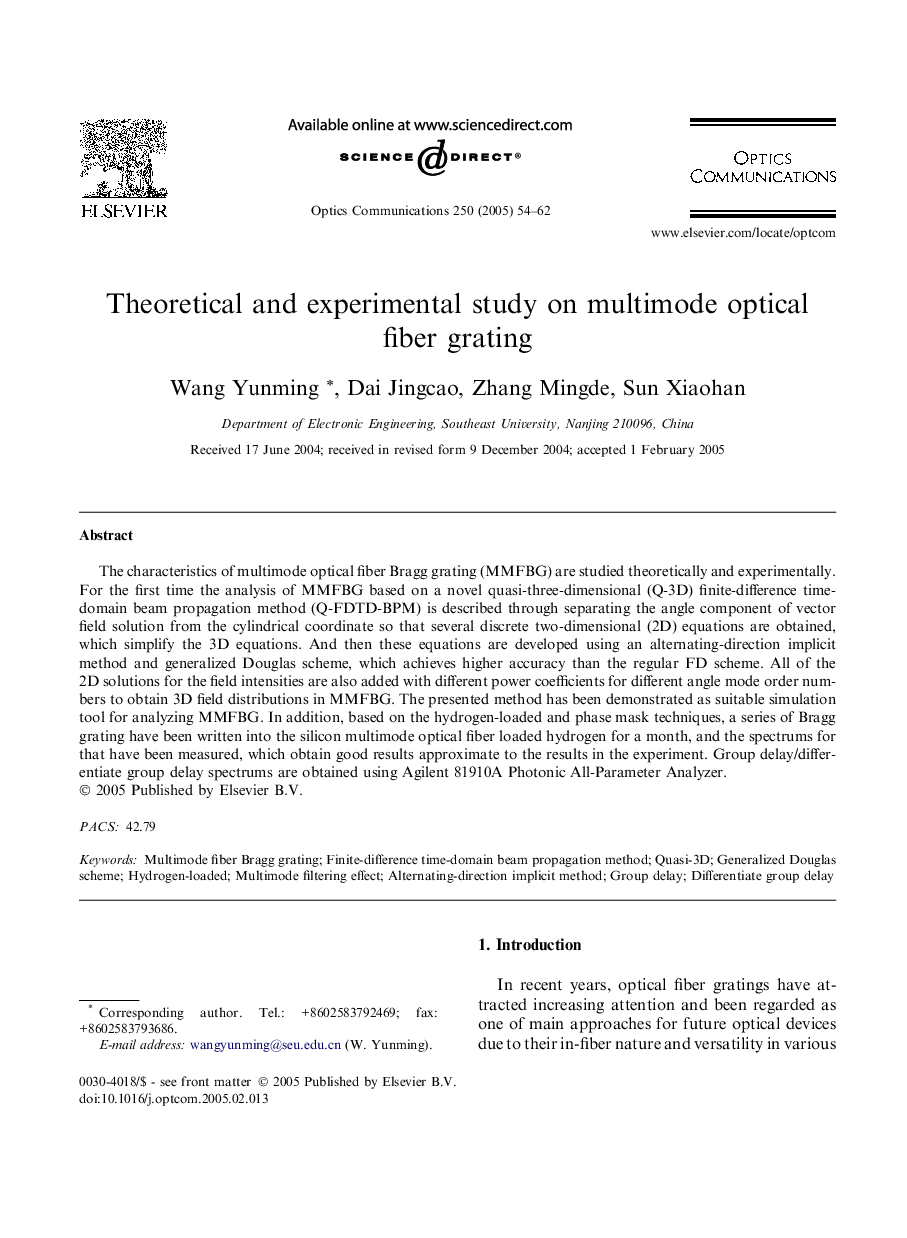| Article ID | Journal | Published Year | Pages | File Type |
|---|---|---|---|---|
| 9785853 | Optics Communications | 2005 | 9 Pages |
Abstract
The characteristics of multimode optical fiber Bragg grating (MMFBG) are studied theoretically and experimentally. For the first time the analysis of MMFBG based on a novel quasi-three-dimensional (Q-3D) finite-difference time-domain beam propagation method (Q-FDTD-BPM) is described through separating the angle component of vector field solution from the cylindrical coordinate so that several discrete two-dimensional (2D) equations are obtained, which simplify the 3D equations. And then these equations are developed using an alternating-direction implicit method and generalized Douglas scheme, which achieves higher accuracy than the regular FD scheme. All of the 2D solutions for the field intensities are also added with different power coefficients for different angle mode order numbers to obtain 3D field distributions in MMFBG. The presented method has been demonstrated as suitable simulation tool for analyzing MMFBG. In addition, based on the hydrogen-loaded and phase mask techniques, a series of Bragg grating have been written into the silicon multimode optical fiber loaded hydrogen for a month, and the spectrums for that have been measured, which obtain good results approximate to the results in the experiment. Group delay/differentiate group delay spectrums are obtained using Agilent 81910A Photonic All-Parameter Analyzer.
Keywords
Related Topics
Physical Sciences and Engineering
Materials Science
Electronic, Optical and Magnetic Materials
Authors
Wang Yunming, Dai Jingcao, Zhang Mingde, Sun Xiaohan,
